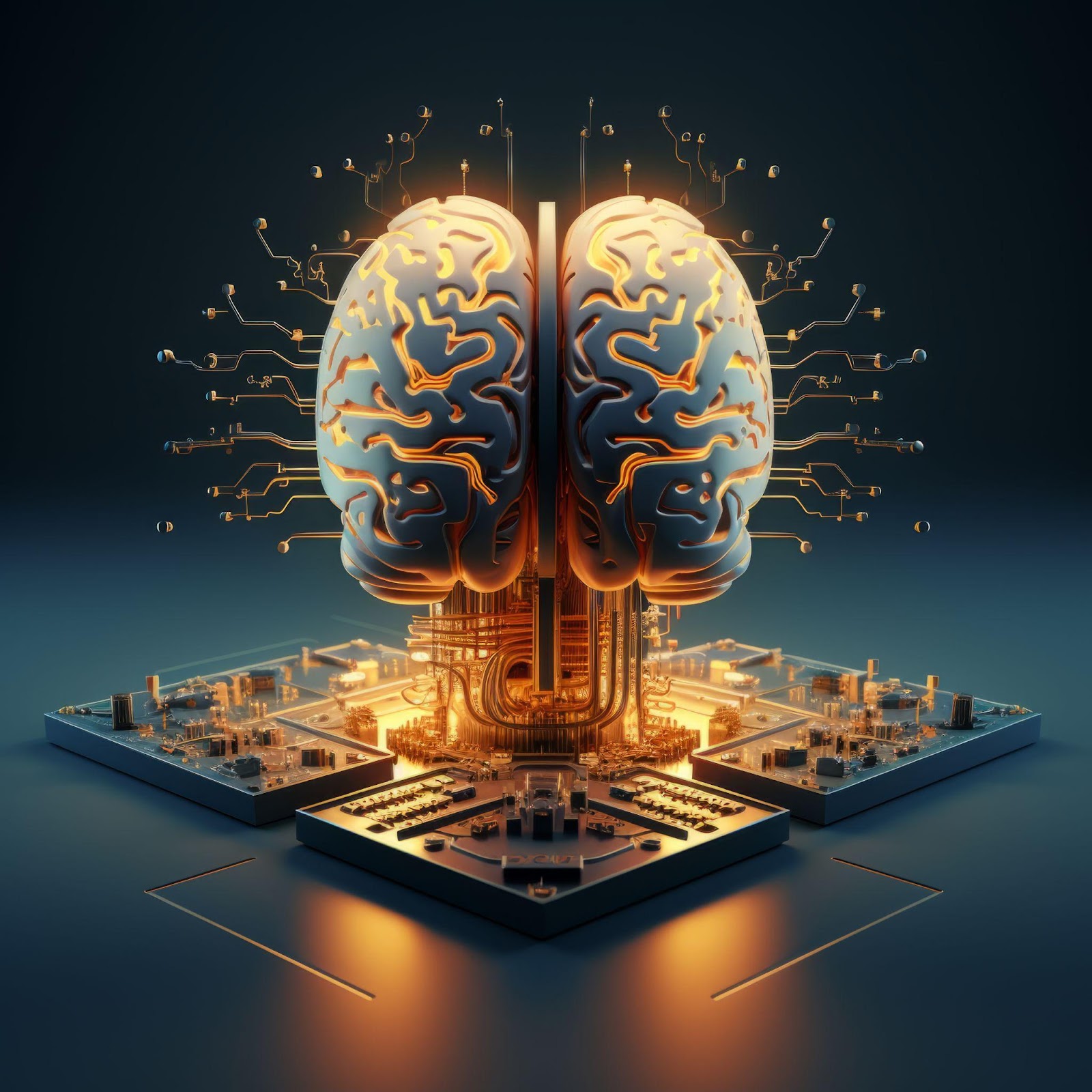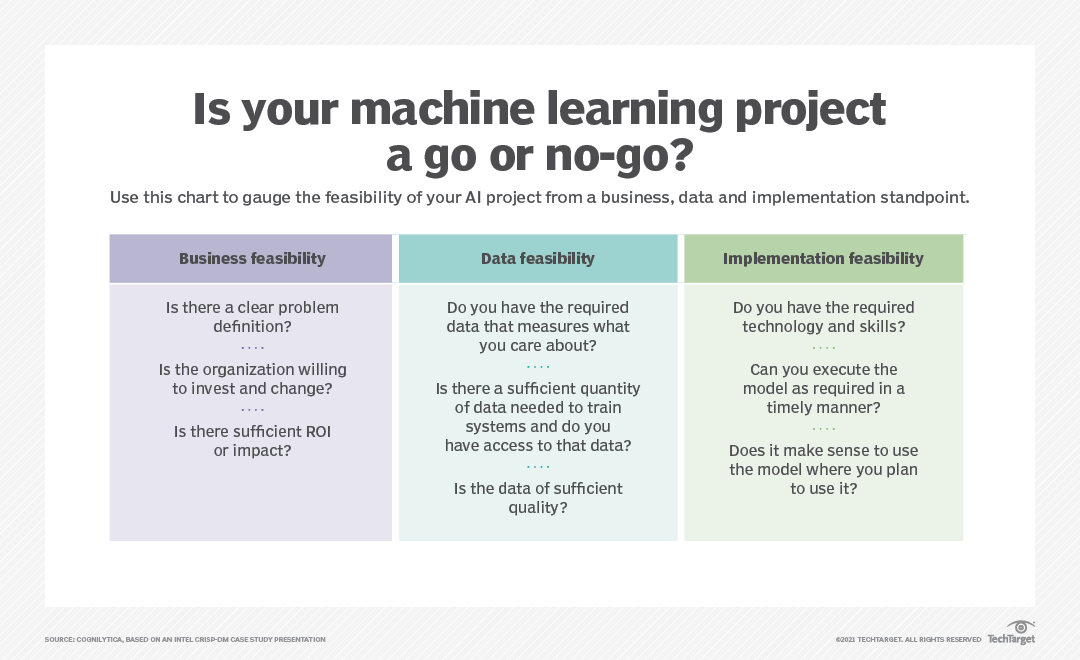Hire Top Class AI and Software Developers Offshore
Call Us
+1-646-535-9141
Let's Talk
- Home
- From Concept to Creation: AI Model Development Guide for AI Startup Founders
From Concept to Creation: AI Model Development Guide for AI Startup Founders

September 27, 2024 - Blog
The advancements in AI in the last few years have been exceptionally rapid. What once seemed like science fiction—autonomous vehicles, self-healing systems, and AI bots holding human-like conversations and making predictions—has become a part of our daily reality. Consumers’ rapid adoption of AI has sparked a surge of interest from investors, leading to a wave of new AI startups. The potential of AI to disrupt industries is no longer a prediction; it’s a tangible trend.
The advancements in AI in the last few years have been exceptionally rapid. What once seemed like science fiction—autonomous vehicles, self-healing systems, and AI bots holding human-like conversations and making predictions—has become a part of our daily reality. Consumers’ rapid adoption of AI has sparked a surge of interest from investors, leading to a wave of new AI startups. The potential of AI to disrupt industries is no longer a prediction; it’s a tangible trend.
A Google study reveals that a significant majority (74%) of organizations are already reaping the rewards of their investments in generative AI. This surge in adoption is mirrored by the AI software market, which is projected to reach a staggering $126 billion by 2025.
Investor confidence in AI startups has also reached new heights. A recent analysis indicates that these companies are attracting substantial investment, with an average revenue multiple of 17.8x. This impressive valuation reflects AI’s immense growth potential across various sectors.
The opportunities for entrepreneurs considering AI model development in 2024 are abundant. However, while the opportunities for AI startups are immense, the path to successful AI model development is far from straightforward. Challenges like identifying groundbreaking ideas, enhancing existing products, hiring exceptional talent without inflating costs, and attracting funding are just a few of the hurdles that AI startups must overcome.
This guide outlines the essential steps to build AI software, common challenges, and strategies for navigating the complex landscape of AI model development.
Table Of Contents
What Are The Steps To Build AI Software?
AI model development could be compared to navigating a maze with constantly shifting walls. New areas of development and new use cases emerging at a breakneck speed add to the complexity. Following a structured approach and painting a clear vision can enable streamlining the process and overcoming these complexities.
The AI development lifecycle is a roadmap to building your own AI, providing a detailed blueprint for AI model development and navigating common AI challenges.
Below, we’ll explore the key steps to build AI software:
1. Identify a Business Problem
A successful business and, by extension, successful AI model development starts with solving a significant consumer problem. Whether it’s an issue you personally encounter or one you’re deeply familiar with, begin by clearly identifying the user’s problem. Understand how, when, and where they experience this issue, and design specific use cases to address it. Typically, your business challenges will fit into one of the following categories, and your AI use cases will be based on these.
- Classification: AI models in this category sort data into predefined classes or categories. Common applications include spam detection, image recognition, and medical diagnosis, where the goal is to classify inputs based on learned patterns.
- Regression: Used to predict continuous outcomes, such as sales forecasts, price predictions, or demand estimation. These models are essential in industries like finance, retail, and real estate, where predicting future values is crucial for decision-making.
- Recommendation: Used to suggest products, content, or services to users based on their preferences. These models are widely used in e-commerce, social media platforms, and streaming services enhancing user experience by personalizing content.
Defining your business objectives early on will help you determine which AI models and data types are necessary, and how to source them.
A well-defined vision of your final product will also help you create an AI minimum viable product (AI MVP). This allows you to gather early user feedback and iterate quickly, refining your solution over time.
This TechTarget framework provides a clear thinking guide to understanding the feasibility of your project in terms of business, data, and implementation.

This framework provides a reality check on the feasibility of AI startup ideas and enables founders to navigate common pitfalls.
2. Data Identification, Collection, and Cleaning
Data is the lifeblood of any AI product. Your data’s quantity and quality directly influence your AI solution’s effectiveness. Data preparation is also one of the most time-intensive tasks among the steps to build AI software—a recent survey revealed that it can consume up to 22% of the total project time.
Data can be collected through various methods, including:
- Using pre-cleansed datasets
- Procuring data from open sources
- Generating synthetic data
- In-house data collection
- Web scraping
- Crowdsourcing
Collecting high-quality data is essential to maintaining integrity, ensuring consistency, and achieving accurate outcomes.
Once you’ve gathered reliable data, the next crucial step in AI model development is data cleaning and preparation.
This step could include data scrubbing, validation, dealing with outliers, and eliminating duplicate or irrelevant data, and more.
Data preparation is one of the most crucial steps to avoid inconsistencies and errors, significantly improving the accuracy of your AI model’s predictions and outcomes, increasing your chances of success.
3. Selecting the AI Model
After defining your goals and preparing the data, the next step is to choose the type of AI model that best suits your needs. The problem you’ve identified, and the data you’ve gathered are critical factors in this decision. Additionally, considerations such as time constraints and available computational resources will influence your choice of AI model. Here are some common types of AI models:
- Machine Learning Models: Learns from data and improves their performance over time, making them ideal for task recognition, prediction, and decision-making tasks. Types of Machine Learning Models include:
- Supervised Learning: Learns from labeled data to make predictions or classifications.
- Unsupervised Learning: Identifies patterns and relationships in unlabeled data.
- Reinforcement Learning: Learns by experimenting within an environment and adjusting its actions based on received rewards or penalties.
- Deep learning: A subset of machine learning that identifies complex patterns within data by leveraging multi-layered artificial neural networks. These models excel in applications including image recognition, natural language processing, and speech recognition.
- Computer vision models: Enables computers to understand and comprehend visual information from the real world. Various AI models are employed to achieve this, each with its own strengths and applications, including Convolutional Neural Networks (CNNs), a common model used for tasks like image, facial, and speech recognition, signature verification, and autonomous vehicle navigation.
Choosing the right AI model involves striking the right balance between the complexity of the task, the quality, quantity, and type of data, and the computational resources available to develop AI software. By carefully considering these factors, you can select a model that aligns with your project’s goals and constraints.
4. Building and Training the AI Model
With all the essential components in place, it’s time to bring everything together by building, training, and deploying your AI model. This step requires deep expertise in relevant technologies. AI frameworks and libraries, such as PyTorch and TensorFlow, serve as crucial tools and guidelines for constructing and training your models.
These frameworks provide pre-built functions, algorithms, and structures that simplify complex tasks, allowing you to focus on fine-tuning your model to meet your specific needs. Whether designing a neural network or training a model with large datasets, these tools are indispensable for achieving accurate and efficient results.
An alternative to AI model development from ground up is fine-tuning LLM models—this approach allows AI startups to leverage the existing models and fine-tune them to their specific needs, significantly reducing time and cost involved.
5. Deploy, Monitor, and Iterate
After your AI models are built and deployed, the work doesn’t stop there—it’s just the beginning. Continuous iteration is important in maintaining and improving your AI model. This involves regularly gathering user feedback, retraining the model with new data, and fine-tuning its performance. Monitoring how your AI interacts with real-world data and making adjustments based on that feedback ensures the model remains effective and relevant over time.
Think of this as an ongoing cycle: deploy the model, observe how it performs, refine it based on insights, and then repeat the process. This approach helps keep your AI solution responsive to evolving user needs and environmental changes.
Now that we’ve learnt the steps to build AI software, let’s see what are some common challenges AI startups face.
Hire Remote Developers with Kovil.AI & Reduce Costs by 40%
Unlock the full potential of your AI projects with our elite Indian AI talent. From startups to leading SaaS companies, we ensure you have the expertise for success. Schedule a consultation today.
Challenges of AI Model Development
Building an AI model from the ground up requires specialized skills and deep expertise in the niche to achieve desired results. Here are common challenges startups face during AI model development:
1. Data-related issues
Data is the lifeblood of AI models. Every step in the data pipeline—from collection and cleansing to classification—requires meticulous attention to detail. If AI models are not trained on a comprehensive dataset that fully represents the intended use case, they may fail to provide accurate and relevant information to users.
Poor data quality and insufficient data can further impact AI model performance. This can lead to biases, inaccuracies, and a failure to capture real-world complexities. It is essential to prioritize data quality and quantity through all the steps to build AI software to ensure quality output.
2. Overfitting and underfitting
One of the primary challenges in AI model development is the risk of overfitting or underfitting. Overfitting occurs when a model becomes overly specialized to the training data, leading to poor performance on new, unseen data. This can happen due to factors like training on overly specific datasets or providing excessive data. Conversely, underfitting happens when a model is too simple to capture the complexities of the real-world data it’s intended to handle. This can result from issues like insufficient data cleaning, using a simplistic model for a complex task, or other underlying problems.
3. Model deployment and maintenance
Once the AI model has been developed and deployed, ongoing maintenance is required, which requires deep knowledge of how AI models are built. For instance, the black box concern is particularly challenging to resolve because the outputs of AI cannot be explained. Another challenge in the steps to build AI software is incorporating user feedback into the existing models, which requires tuning the model’s parameters to add new information without disrupting its original knowledge.
Working with talent who have specialized knowledge of building and maintaining AI models makes it easier to maintain them and ensure their long-term viability.
4. Attracting and retaining top talent
Given the fierce competition in this landscape, the demand for AI talent makes it harder than ever to attract and retain the right talent. This demand also escalates the cost of hiring experienced AI developers and partners. At Kovil.AI, we bridge this gap by connecting AI startups with specialized and pre-vetted talent and enabling them to reduce hiring costs by up to 40%.
Additional read: How much does it cost to hire remote developers?
Use Cases Of AI Model Across Industries
Now that we’ve explored the steps to build AI software and discussed some of the challenges involved, let’s look at how AI models are being applied across various industries.
AI in Healthcare
AI in healthcare is the most widely used case in AI model development. Here are use cases of AI in healthcare:
- Diagnosis: AI-powered algorithms can analyze medical images (X-rays, MRIs, CT scans) to detect diseases early
- Drug Development: AI accelerates drug development by predicting molecular properties and simulating interactions.
- Personalized Medicine: AI accelerates drug development by predicting molecular properties and simulating interactions.
- Virtual Health Assistants: AI-powered chatbots and virtual assistants provide medical advice and support
AI in Finance
Finance is a highly-regulated industry, and leveraging AI in this sector takes the most amount of time and consideration. Any application of AI software in the finance industry requires compliance with the industry standards and legal requirements. Here are a few use cases of AI in finance:
- Fraud Detection: AI algorithms can identify fraudulent transactions and patterns.
- Credit Risk Assessment: AI helps assess creditworthiness more accurately.
- Algorithmic Trading: AI-driven systems execute trades based on real-time data analysis.
- Customer Service Chatbots: AI-powered chatbots provide customer support and answer queries.
AI in Manufacturing
While traditionally slow to embrace new technologies, AI is also making waves in the manufacturing industry, accelerating the digital adoption and disrupting the industry. Here are a few use cases of AI in manufacturing:
- Predictive Maintenance: AI can predict equipment failures before they occur, reducing downtime.
- Quality Control: AI-powered vision systems inspect products for defects.
- Robotics: AI enables robots to perform complex tasks with greater precision and autonomy.
- Supply Chain Optimization: AI optimizes supply chains by improving demand forecasting and inventory management.
AI in Cybersecurity
AI models equip organizations to protect themselves from ever-evolving threats. Here are examples of AI in cybersecurity:
- Threat Detection and Prevention: AI algorithms can analyze network traffic and identify suspicious activity, such as cyberattacks and malware.
- Security Incident Response: AI can automate the process of responding to security breaches, reducing the time needed for detection and containment.
- Phishing Detection: AI can identify phishing emails and other social engineering attacks.
- Vulnerability Assessment: AI can identify vulnerabilities in software and systems
AI in Logistics
AI model development in the logistics industry improves transparency, accelerates and streamlines the process, and leads to higher productivity and efficiency.
- Route Optimization: AI can optimize delivery routes to reduce costs and improve efficiency.
- Inventory Management: AI can help businesses manage inventory levels and avoid stockouts or excess inventory.
- Demand Forecasting: AI can predict future demand for products and services.
- Warehouse Automation: AI can automate warehouse operations, such as picking, packing, and shipping.
AI in Tourism
Personalization plays a key role in the tourism industry, and AI model development plays a pivotal role in enabling personalization at a large scale. Here are the use cases of AI in tourism:
- Personalized Recommendations: AI can suggest personalized travel recommendations based on customer preferences and interests.
- Dynamic Pricing: AI can help hotels and airlines adjust prices based on search history, demand and other factors.
- Customer Service Chatbots: AI-powered chatbots can provide customer support and answer questions about travel destinations and itineraries.
- Virtual Tours: AI can create virtual tours of tourist attractions and destinations
AI in Education
Education sectors benefit largely from AI as it helps students and teachers stay abreast of the changing landscape and keep up with the current trends. Here are use cases of AI in education:
- Personalized Learning: AI adapts educational content to individual students’ needs and learning styles.
- Intelligent Tutoring Systems: AI-powered tutors provide personalized guidance and feedback.
- Grading Automation: AI can automate the grading of assignments and exams.
- Early Intervention: AI identifies students who may need additional support.
Ethical Implications of AI
Developing groundbreaking AI is undoubtedly exciting, but neglecting its ethical implications can lead to significant consequences, including financial losses and damage to reputation. Responsible AI model development is crucial for ensuring its success and positive impact on society.
One key aspect of ethical AI development is ensuring fair outcomes. Biases, often introduced through datasets, can creep into AI models and contribute to negative user experiences. To mitigate this, testing AI models on diverse data is essential to eliminate biases and make the models inclusive. Additionally, considering the privacy implications of AI is paramount. While AI requires substantial data for training, it also collects user data during interactions. Adhering to industry standards and best data collection and storage practices is crucial to maintaining customer trust and avoiding privacy breaches.
Conclusion
Developing AI software is a highly rewarding yet challenging endeavor. This blog outlines the essential to build AI software, but turning your vision into reality requires specialized skills and deep expertise. At Kovil.AI, we connect AI startups with top-tier AI developers and engineers, helping them reduce hiring costs by up to 40%. Here’s what makes us different:
- Match within 48 hours: Hiring can be complex and time-consuming. At Kovil.AI, we maintain a pool of pre-vetted, handpicked AI experts, and we can match you with the right talent in just 48 hours.
- 14-day satisfaction guarantee: If you’re not completely satisfied with the talent provided, we will rematch you with another expert from our talent pool within 14 days at no additional cost.
- 40% cost reduction: In a competitive and demanding market, hiring AI talent can quickly become expensive. Kovil.AI’s talent pool includes skilled experts from India who specialize in AI software development, allowing you to reduce hiring costs by up to 40%.
Ready to build your own AI? Please schedule a call with us or contact us to discuss your project.

Get Matched with an AI Expert in 48 Hours
Tap into a pool of pre-screened AI professionals ready to advance your project. Get a 40% cost savings without compromising on quality. Contact us today to learn more.
